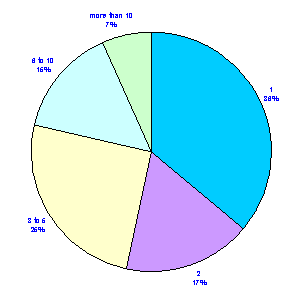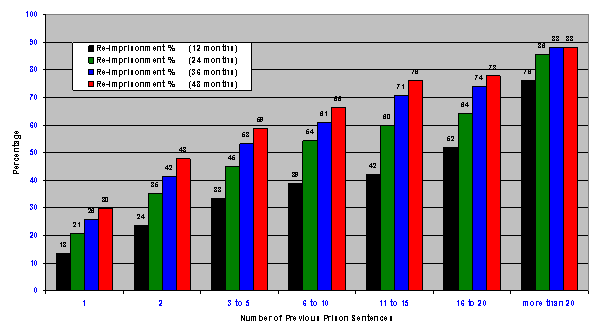Re-imprisonment rates by number of previous sentences
The following section examines more closely the reconviction dataset by disaggregating offenders according to the number of previous prison terms. Those for whom their release in 2002/03 was from their first-ever prison term are designated in the following as “first-timers”. The remainder, who had served two or more previous prison terms, are designated “recidivists”.
The graph below indicates the extent to which members of the 2002/03 prison release cohort had served previous terms of imprisonment. Of interest here is the finding that 36 percent of the sample were released from their first prison sentence (this group of first-timers are denoted as having “one previous term”). A quarter of the sample had served between three and five previous terms, and seven percent had served more than ten previous terms. A similar picture emerges when histories of both prison and community sentences are examined: about one in six had no previous prison or community-based sentences (although the records used here do not include previous conviction resulting in fines or other minor penalties (e.g., convicted and discharged).
Graph 13: Prison releases by number of previous prison sentences

The following graph indicates how the likelihood of subsequent re-imprisonment varies according to the number of previous custodial sentences. Only 30 percent of those who were released from their first term were re-imprisoned by the end of the 48 months. In marked contrast, however, 78 percent of those who had served more than 10 prison sentences were re-imprisoned. Remarkably, a number of offenders were recorded as having previously served more than 20 sentences. Of these, an astonishing 88 percent were again imprisoned, with most of the remainder being convicted and serving at least one community sentence.
Graph 14: Re-imprisonment rates by number of previous prison sentences


